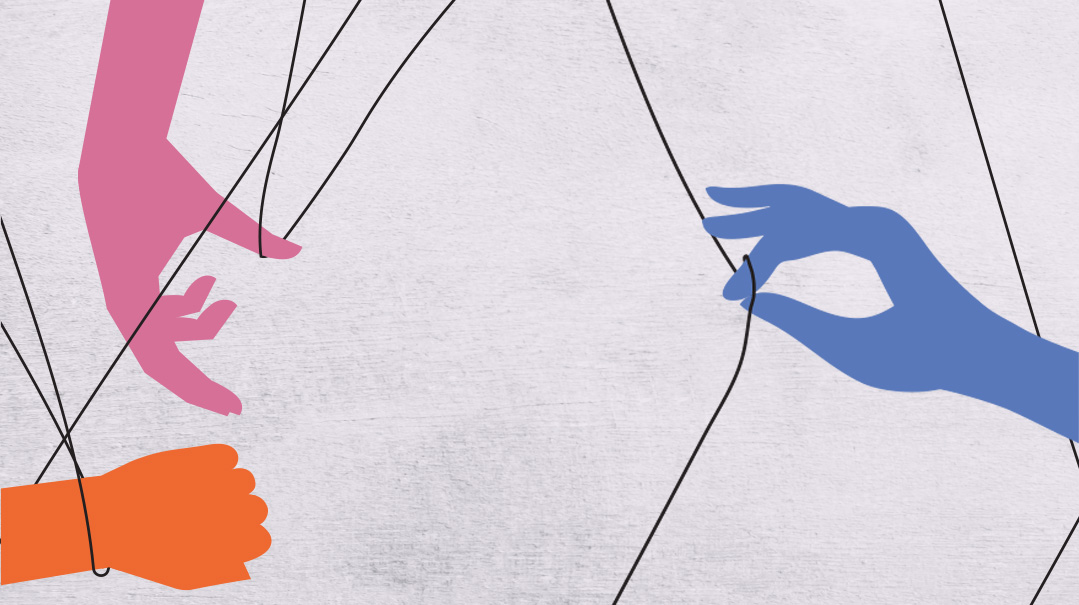Within My Walls: Afterword

Here’s my answer: everything in the story could have happened, even if it didn’t

You never know what you’re going to find when you start writing a story.
Oh, you have some vague ideas. You want to explore how the trauma of the Spanish expulsion informed the messianic fervor that swept through the Jewish world, culminating in the debacle of Shabtai Tzvi. How the golden era of Tzfat was born from the brokenness and destruction of Spanish Jewry.
As I wrote this serial — it’s a two-year process, beginning with research, and culminating with those two words that you can’t quite believe as you type: The End — I held some questions in my mind.
Can we heal after our trust in the world has shattered — and if so, how? Can we forgive ourselves if we do the unthinkable? What do loss, trauma, and failure do to a person? What we read about as a collective trauma — events that take place to us as a nation — is magnified in each person’s life, and becomes an individual struggle.
My three main characters reacted in vastly different ways: Bilhah, for whom displacement was mingled with abuse — physical, emotional, and spiritual — honed her survival skills. Leonora sought desperately for rectification, and failing that, longed to bring the Final Redemption, mirroring the communal longing for restoration and comfort. And Eliyahu, who was perhaps least affected, suffered his own losses, causing him to reject the world and spurn relationships until he was coaxed out of his literal cave by Yannai.
Bilhah
Some of the most difficult scenes for me to write were those of Bilhah’s childhood. The abuse she suffered encompassed every area.
In my other hat, as a therapist, if I had to give Bilhah a diagnosis, it would be CPTSD (Complex Post-Traumatic Stress Disorder). Giving that diagnosis, while feeling foreign to me as a writer (I create people, I don’t lift them out of the DSM V), can be helpful to a survivor. It gives a label and sense of legitimacy to her bewildering array of symptoms: the moments of dissociation, her profound distrust in others and in life itself, her quiet anxiety that caused her to view the world as something that could rise up and pounce at any moment.
It would have been easy for me to have staged some kind of regret/apology/forgiveness scene: not just easy, but almost expected. The Western, Christian world puts a tremendous emphasis on forgiveness, but the Torah tells us that forgiveness is not always an obligation, nor even desired.
To have Bilhah forgive her father may have tied up the ending in a big pink bow (something I always resist, as you may have noticed), but I felt that doing so would be a betrayal of her story, the depth of her wounds, and the pain of all other abuse survivors. In fact, one of the most powerful moments, for me, was when Yannai affirmed Papa’s imprisonment. “Ah. Good,” he said. “The Almighty metes out justice, you see.”
With these words, Yannai has righted one of the most fundamental and painful aspects of Bilhah’s past: he has restored the world to its foundations of right and wrong, good and bad. The whole world might have told Bilhah that her father was a good man, a messenger of G-d who had printed the Talmud after it was all but lost in the Expulsion from Spain. But she knew the truth — and she was right.
It’s something I see in my therapy clinic: when the abuse is perpetrated by an authority figure, then the survivor’s trust in the world, in justice, in G-d Himself is shattered. Part of restoring that trust involves reinstating right and wrong. Acknowledging, bearing witness to what took place and defining it: this was wrong. He is wrong. This is evil.
Healing requires a safe space, a place where the survivor feels protected and secure. Even in Salonika, Bilhah had some safe spaces: the home of the widow Mazaltov, the ezrat nashim in Salonika, the Chacham and his wife.
After she ran away, the Imperial Palace became that space: an irony, for the Palace was a hub of power politics as Hurrem Sultan used her considerable wit and intelligence to make it to the top — and thereby protect her child from certain murder by rivals to the throne. (And here we see the theme that’s portrayed in Leonora’s life: how life and death intertwine, how motherhood can bring out the best and the worst in us.)
Abuse and trauma often leave people with a sense of bewilderment, and there’s a neurological reason for this: trauma affects memory in different ways, including fragmenting the sequence of events so that the “story” we remember can be cut, lost, or confused, with pieces missing. The victim is left questioning her own judgment, and even questioning whether she imagined what happened.
Could she really have lived through that? Is what she remembers correct? How can it be? Memory can be fickle and faulty, but truth will visit, in flashbacks and dreams, and even through the story the body tells us, for it is imprinted on the body and makes itself known through physical symptoms, flashbacks, and moments of dissociation.
One of the most important steps in healing from trauma is to be witness to the story. And we see that it is only after Bilhah begins to speak, first to Elvira and then to Eliyahu, that she can begin to make a mental and emotional separation from her father, that she can begin to find words, even the simplest: “He is not a good man.”
Leonora, too, needed a witness to hold her story and ironically, she found one in Bilhah, that girl who summoned up an image of the granddaughter she could have had.
Leonora
And what of Leonora?
There’s a cardinal rule in writing: each character must want something. That want drives their story, as they explore what they will do to get it, and on the way, discover that what they thought they wanted is often a convenient mask for a deeper, rawer longing.
What, I thought to myself, if that desire was to bring Mashiach? To find redemption?
Associations came flooding in: the efforts of Rav Yaakov Beirav to reinstate the semichah — why? So that malkus, the punishment of lashes, could be administered, thus providing full atonement for sins that incurred kareis. It was an original solution for the religious torment suffered by so many who, during the Spanish Expulsion, were faced by impossible choices.
Another association was a song I always find deeply moving: Chazor Becha, by Yosef Chaim Shwekey. The words are taken from the story of Acher, Elisha Ben Avuya, one of the great sages of the Gemara who went astray, and whose fatalism prevented him from reinventing his life.
Another concept: Rav Kook shares that some souls come from a place of tohu, rather than the place of tikkun. And tohu, that place of chaos and fragmentation, is actually a place of great power. Don’t ask me what that means, but I imagined a soul of tohu, a person of great strength, huge yearnings and power, who was, at the same time, tortured and filled with regret and even self-loathing.
Another: many of us are familiar with the kabbalistic concept of sheviras hakeilim, that when Hashem created the world, His endless light was too much for the vessel meant to contain it, and the vessel shattered. What followed was the forming of another vessel, wider and deeper than the first. It, too, was not big enough to contain the light. And so another vessel was created, and on and on until the light could be contained.
This may sound abstract and detached. But it’s a reality within each soul. As we grow into ourselves and our roles, we shatter again and again. We gather up the pieces and put them back together, creating something stronger and bigger and deeper, even as the fragments can pierce and draw blood.
It’s a concept I find deeply meaningful, and I see it echoing through so many aspects of my life, as dreams are born, shatter, and reform, as children grow, as I change.
In fact, during the writing of the serial, I was deeply blessed, and our eldest daughter got engaged and married (fellow writers: serial writing plus wedding prep is not a good combination). Nothing prepared me for the swirl of feelings — the intense gratitude and joy coupled with a feeling that I’d been struck by lightning and was left bewildered and deeply sorrowful.
The night before the eirusin I spent some time looking up the source of the minhag to break a plate (what else do you do when sleep seems irrelevant and unattainable?). I found some nice ideas, but nothing touched me. And then, the moment came. We smashed the plate, and I understood deep inside: sheviras hakeilim. Something needs to break to make space for something new — a new way of relating, of creation. And yes, I cut myself on the fragments and a dear friend was on hand to give me a wad of tissues.
It’s a concept that contains, as well, so much of what motherhood means. We live in a culture that romanticizes motherhood — but doing so doesn’t give us space for all the Stuff. The grit that’s needed. The painful ambivalence we can feel toward our children. The way we can hate ourselves. The forgiveness that needs to be built into the role.
It’s so much easier for us to say, “I feel like a failure,” rather than to say, “I am repulsed by my child for the way he makes me feel and what he turns me into.” But when we can identify our emotion, acknowledge it to ourselves — wrenching though that may be, we can also work through it and let go of it. Sadly, the high rates of depression among women can be the result of hatred turned inward, so that it attacks the sense of self.
We’d be doing humanity a huge favor if we acknowledged that motherhood, parenthood, is complicated. It can be heartbreaking. It can be infuriating. It can be exhilarating. It can be healing. Often, it’s everything at once. Within this complicated place, forgiveness of self and others can give us much-needed oxygen.
Leonora gave away her daughter not because of the stresses of the time, but because her baby symbolized her own abandonment. But then she was haunted by this choice for the rest of her days. There were mitigating factors, because I did not want her to turn into a monster. She has her dark moments — we are more afraid of greatness than of banality — and she is great, and at times arouses fear.
This was not an easy story to write, nor to read. After a particular intense chapter, I could be left shaking and raw for the rest of the day. So thank you for having the courage and persistence to read.
I hope that although it may not have been easy, it was worth it. For we all carry with us pain, and many also the fracture of trauma, and at the same time, we all have inside the G-d-given gift to find hope and connection, to gently touch the delicate blossoms of healing to come.
Fact, Fiction, and What Lies Between
Where is a story born? A story like this has so many beginnings.
I used to be fascinated by the walls of Jerusalem, and think to myself, behind every stone is a story. But what exactly is that story? Here’s one attempt to bring a story behind some of these stones.
When writing historical fiction, people constantly ask, What’s true in this story, and what did you make up?
Here’s my answer: everything in the story could have happened, even if it didn’t.
But within this story, there are some parts that really did take place. Here are some:
Abraham Castro was a real person, who converted to Islam sometime during the period when he supervised the building of the Wall of Jerusalem.
The Inquisition records show a phenomenon of “child prophets,” children who gave messages of hope and even of redemption. During a period when talk could condemn a person to the blazing fire of the auto da fé, the collective psyche looking for hope still found a channel: children, who had “otherworldly powers.”
Merino wool was prized throughout the world, and the main source was Spain; it took protracted negotiations with all kinds of political leverage to procure a flock. And yes, Tzfat had a wool factory.
Shlomo Molcho did indeed publish his Sefer Hamefoar in Salonika in 1529, so he would have approached a printer.
There were Jewish women in the harem of the Ottoman Empire: notable is Esther, wife of Eliyahu Handali, who supplied jewelry to the women and even dabbled in diplomacy between the Ottomans and Venetians. After the great fire of 1569, she gave shelter and aid to the survivors. Esperanza Malchi corresponded with Queen Elizabeth I of England, writing letters in Italian on behalf of the Imperial household.
But then the facts end and the imagination takes over. What were their lives like? What kind of struggles did they have? What were their hopes and dreams? How did they cope with tragedy?
So you begin searching. Some of what you find is intensely moving, other texts require more work to find the human struggle within the lines.
These lines are from a poem by Yehudah Abravanel, Telunah al haZeman, written in 1503.
Time wounded me…
He did not stop at whirling me around,
Exiling me while yet my days were green,
Sending me stumbling, drunk, to roam the world…
So that I’ve spent two decades on the move
Without my horses ever catching breath—
So that my palms have measured oceans, weighed
The dust of continents — so that my spring is spent—
No, that was not enough:
He chased my friends from me,
Exiled my age-mates, sent my family far
So that I never see a face I know—
Father, mother, brothers, or a friend….
These lines — written more than five centuries ago — make you shiver. You start seeing the Expulsion not as a date in a history book, but as a national tragedy, a trauma that stamped itself on our collective psyche. Distance disintegrates.
Suddenly, we’re not talking about a community, a city, a country. We’re talking about a son who longs to see his mother one last time, a father separated from his elderly parents, families torn apart, forced to wander the earth in search of a place to call home.
Or you read a document detailing the following facts (Um caderno de crstaos-novos de Barcelos Braga, 1960):
Rabbi Tomas da Victoria lost his daughter Mazaltov, age one, but she was handed back to her father when he himself converted to Christianity.
Rabbi Isaac and his wife Oraboa lost their son Chaim, age six, and two daughters, aged four and two. The children were given the Christian names Manuel Vaz, Gracia, and Catarina. They were handed over to Old Christian families.
When you read this, history hits you in the gut. I closed my eyes and imagined the impossibility of the situation: your child or your religion. What do you do? Impossible questions with impossible answers.
There are personal accounts, and there is also a corpus of questions.
The tragedies of our lives find their form in a halachic question, which are then passed down to us in the form of sh’eilos and teshuvos. Often, we don’t find laments, how could it have come to pass, this wreckage of our lives? Or, what new oppression is this?
Rather, we read: what is the halachah of getting a divorce from a man who has converted? Is she an agunah? If he gives a divorce, is it valid? Is there halachic validity to a divorce given by a man who is an unbeliever? Though who knows what he truly believes, when he was driven to the church by sword point, stumbling over the corpses of his family and his friends.
It’s so tempting to cast people from the past as heroes and villains, that old dialectic of good versus evil. There were both, there always are. But mainly, there are just people, who possess every aspect of who we are, who can be selfless and small-minded, awe-inspired and jealous, magnanimous and flawed.
Perhaps one of the reasons why we do this is so we don’t have to identify with them so closely. They’re not like me….
Apart from that they are.
(Originally featured in Family First, Issue 843)
Oops! We could not locate your form.



